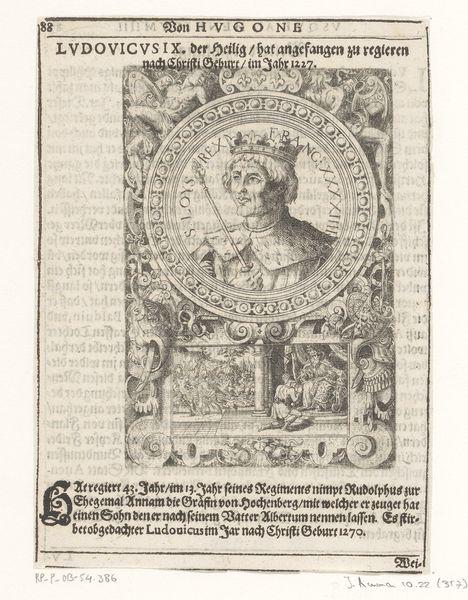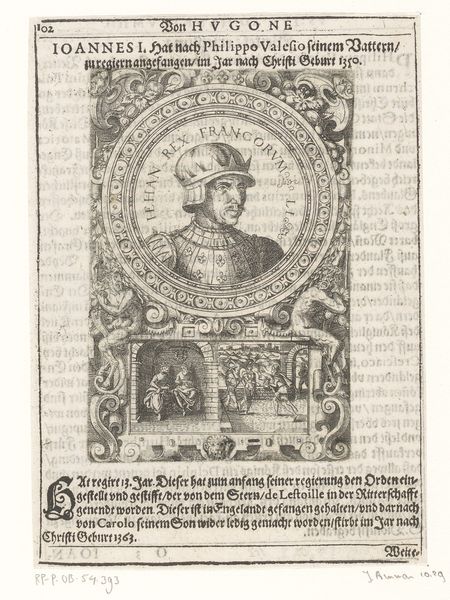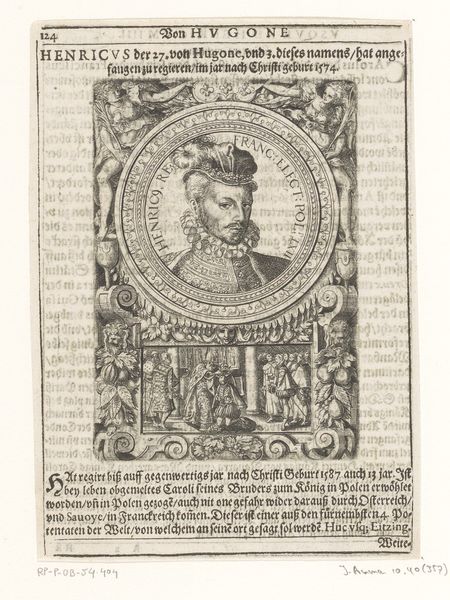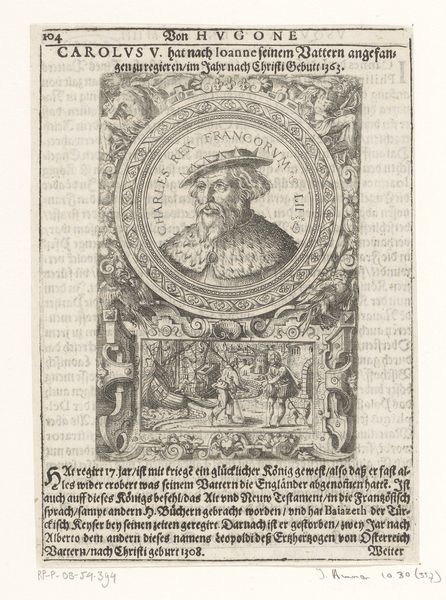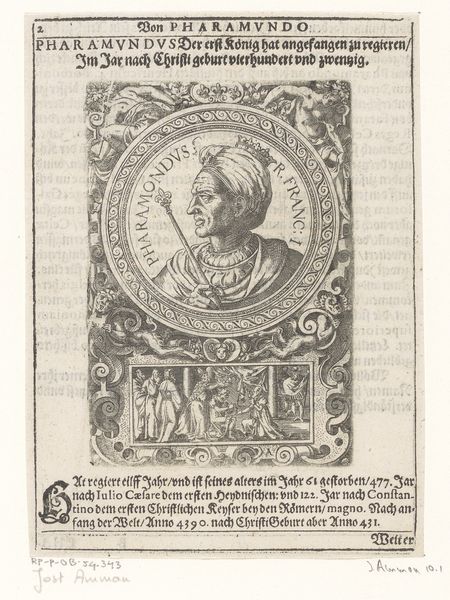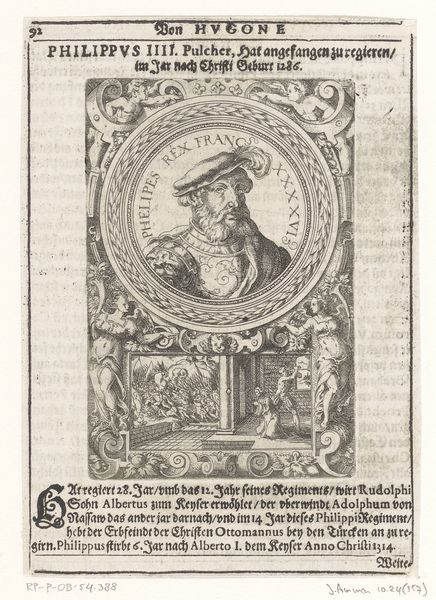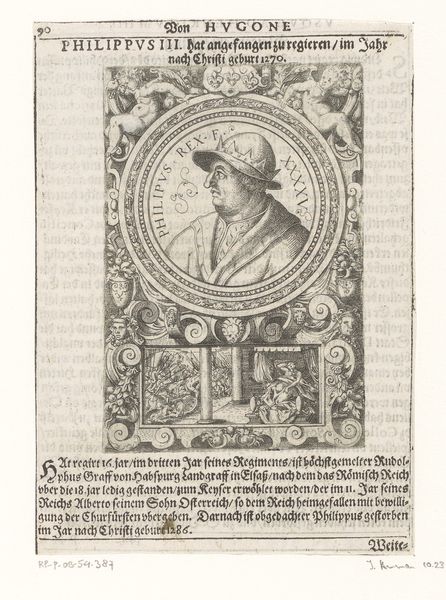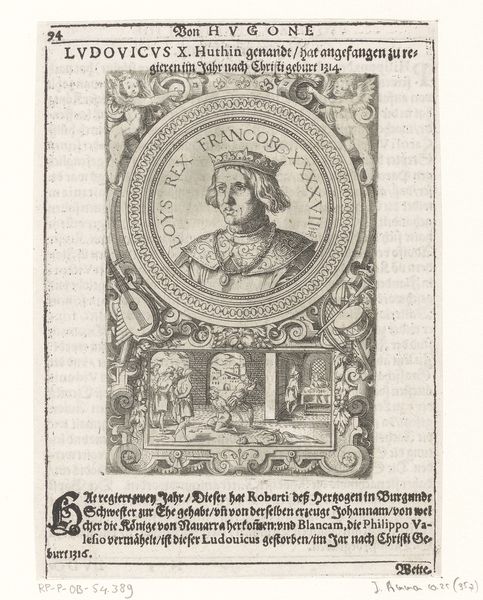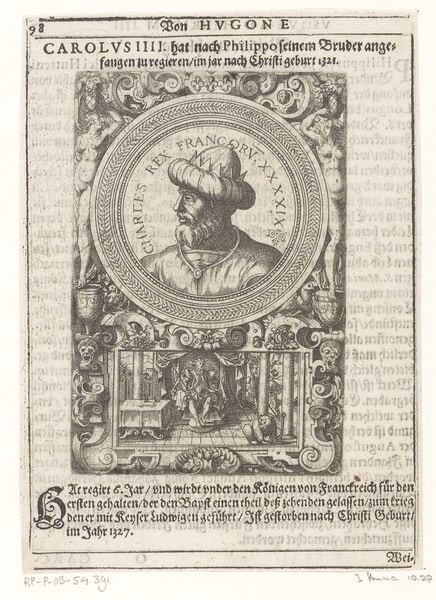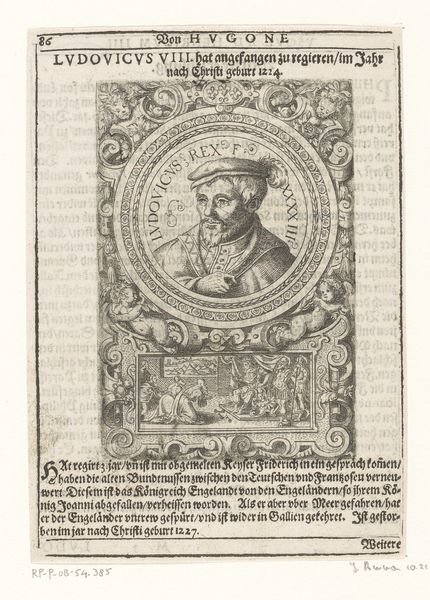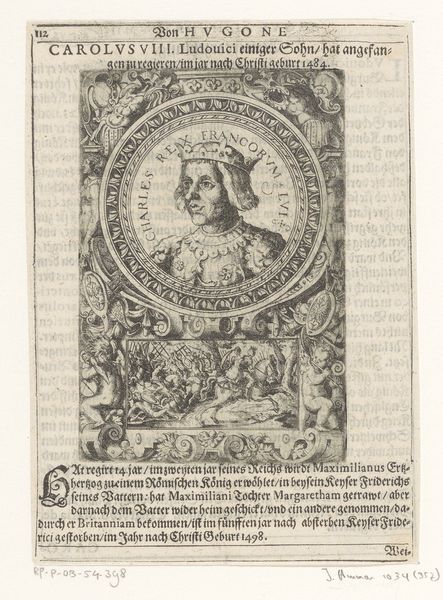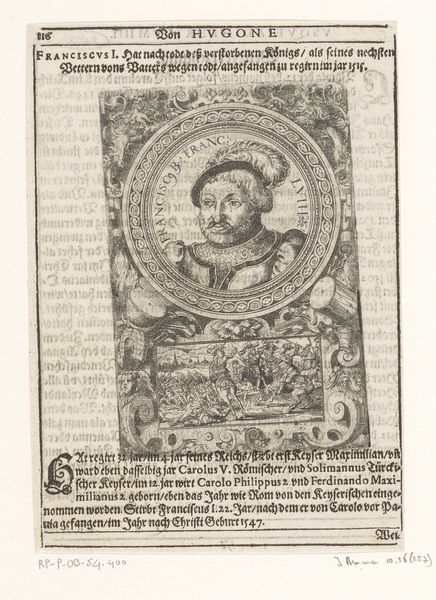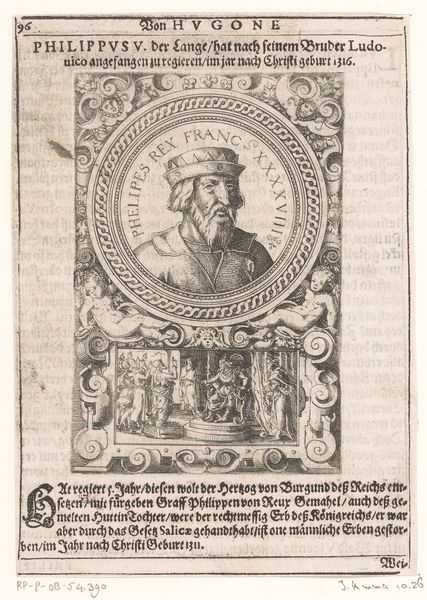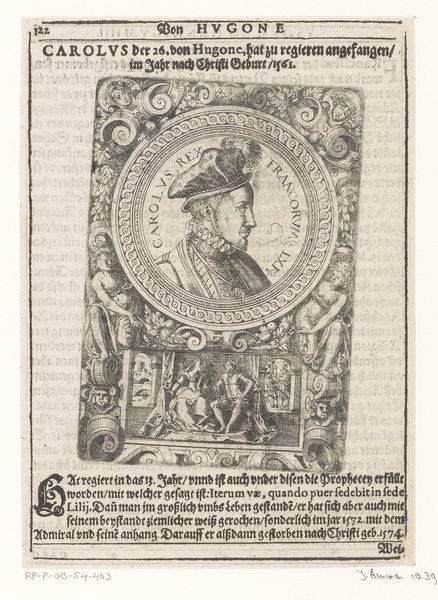
print, engraving
portrait
pen drawing
pen illustration
old engraving style
mannerism
history-painting
engraving
Dimensions: height 118 mm, width 78 mm
Copyright: Rijks Museum: Open Domain
Editor: Here we have Jost Amman's "Portret van Lodewijk VII, koning van Frankrijk," created in 1598. It’s an engraving, currently held at the Rijksmuseum. The details are incredible! How can the artist achieve so much clarity only with line work? I also find that text is placed quite randomly on the image and don’t know its meaning or use. What do you see in this piece? Curator: It's a powerful image, and your observations are insightful. Amman produced this print within a cultural milieu hungry for representations of power and history. Consider the political function: prints like this circulated widely, shaping public perceptions of rulers and their legacies. Notice the text surrounding the portrait – it frames Louis VII's reign within a specific historical narrative, emphasizing his crusades and achievements. What kind of message this piece aimed to disseminate? Editor: It appears that there are details on this portrait like Louis’ clothing and armor, along with a battle on the lower register. I supposed it shows Louis VII to be some type of war hero of sorts? Curator: Precisely! It serves as visual propaganda, connecting Louis VII to ideals of kingship and religious duty that were especially relevant during the religious conflicts of the late 16th century. The context and use of prints in that time were to emphasize these narratives. Editor: It’s interesting to view it now, as more than just a portrait, but as a piece created in that specific social context to fulfill political ends. The image does serve as some sort of political artifact rather than just a decorative art. Curator: Exactly! Thinking about how art functions within its historical moment allows us to see beyond aesthetics and consider its social impact.
Comments
No comments
Be the first to comment and join the conversation on the ultimate creative platform.
